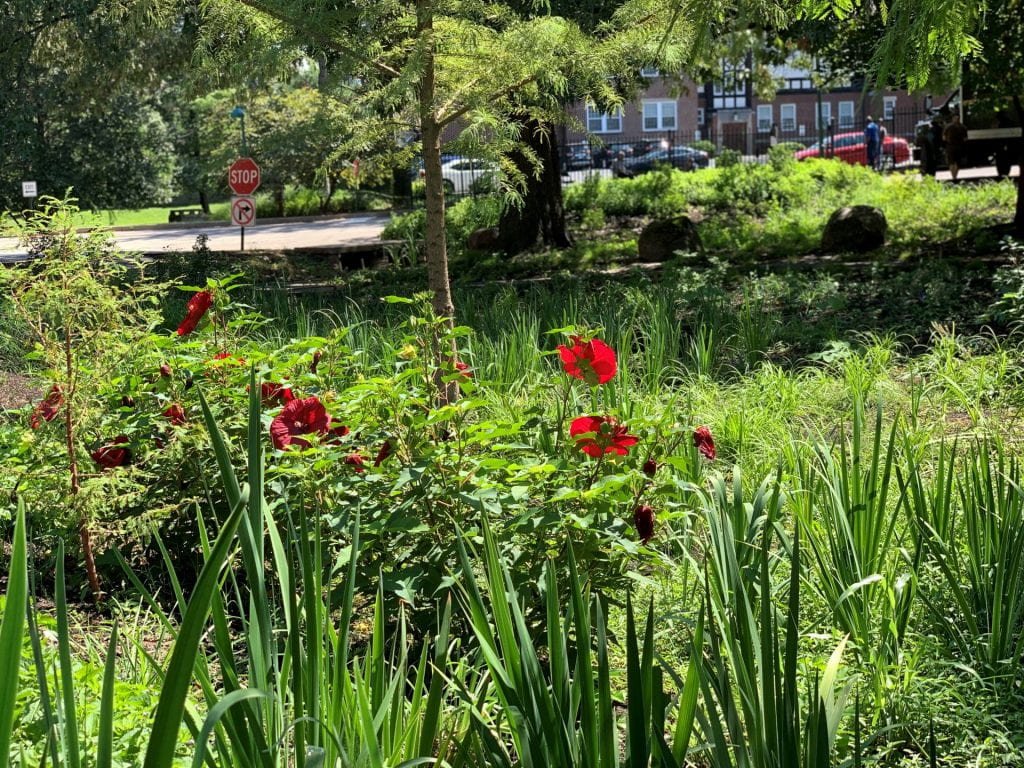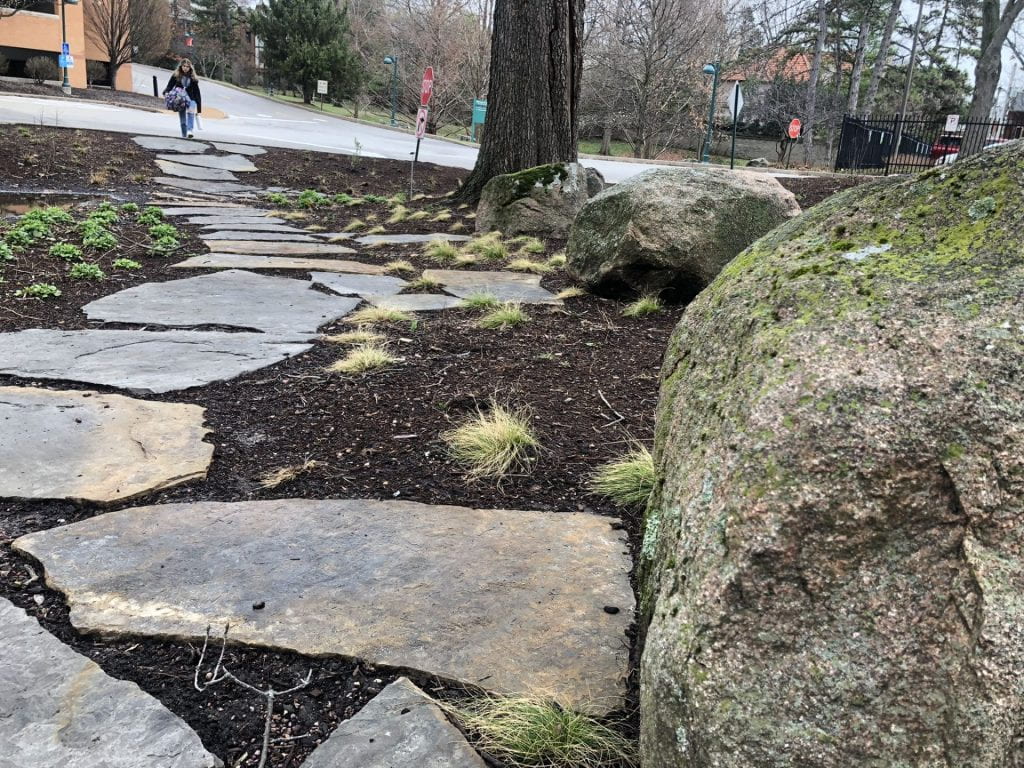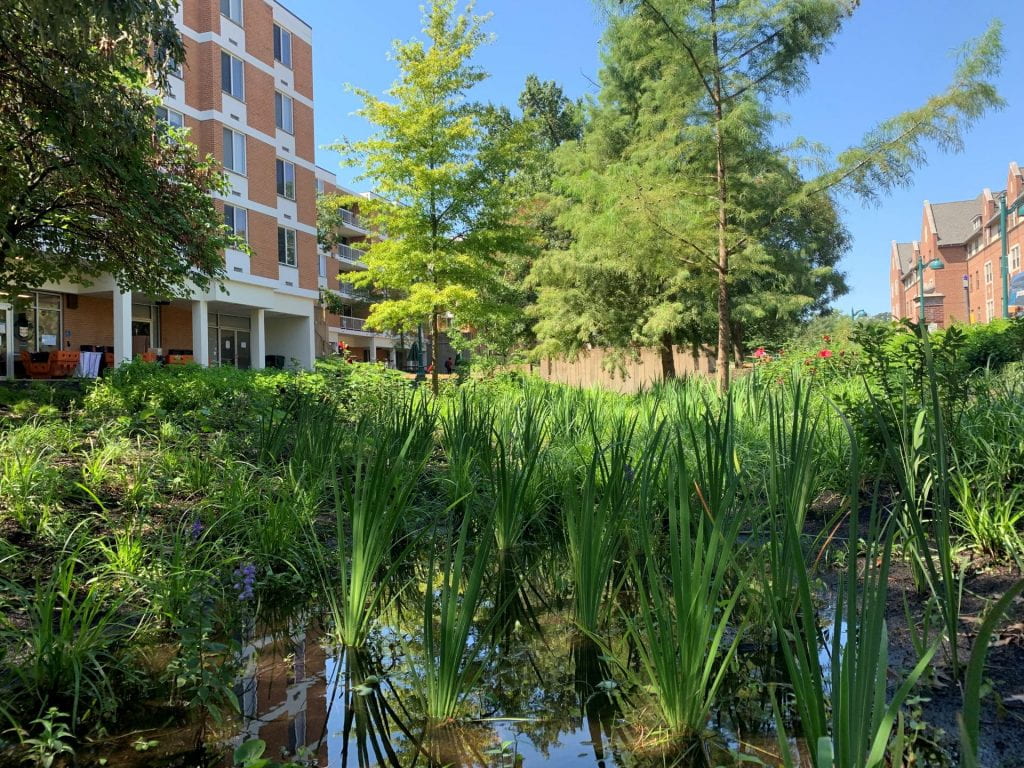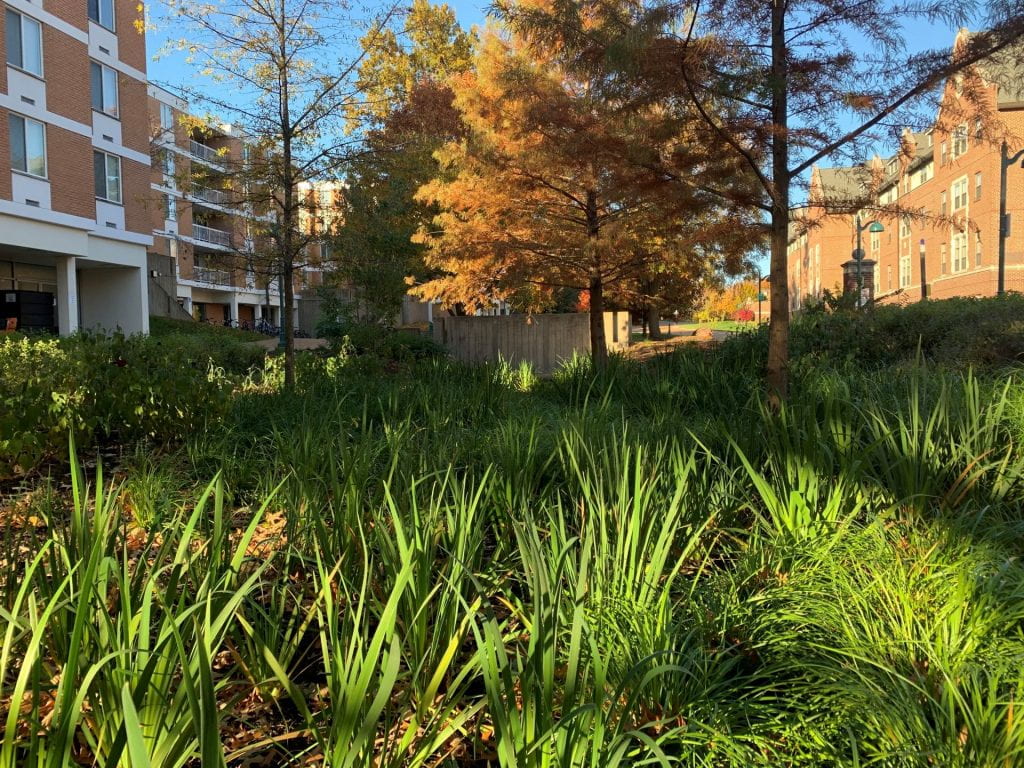Students making the journey to pick up packages from the Hitzeman Hall mailroom on the S40 may have noticed some subtle changes as they cut across the newly-laid flagstone. The campus grounds team has transformed the space over a two-phase project. Unlike the quick visual impact of a new building, new landscape takes a bit longer to fill in and get established, so the realization that something has changed may be slower.
Before
Prior to the spring of 2021, the existing site was about 7,500 square feet of unirrigated lawn with several large trees and a swale that drained a significant amount of the surrounding area when it rained. The most significant assets of the existing space was the mature Southern Red Oak and the moss-covered boulders underneath.
With package delivery increasing in prominence over the years, the nearby mailroom continues to be a popular destination. Students regularly cut across the space as they navigate the S40. Due to the shade of trees, the turf wasn’t in great shape. And, with the swale staying damp for most of the year, mowing was a challenge.
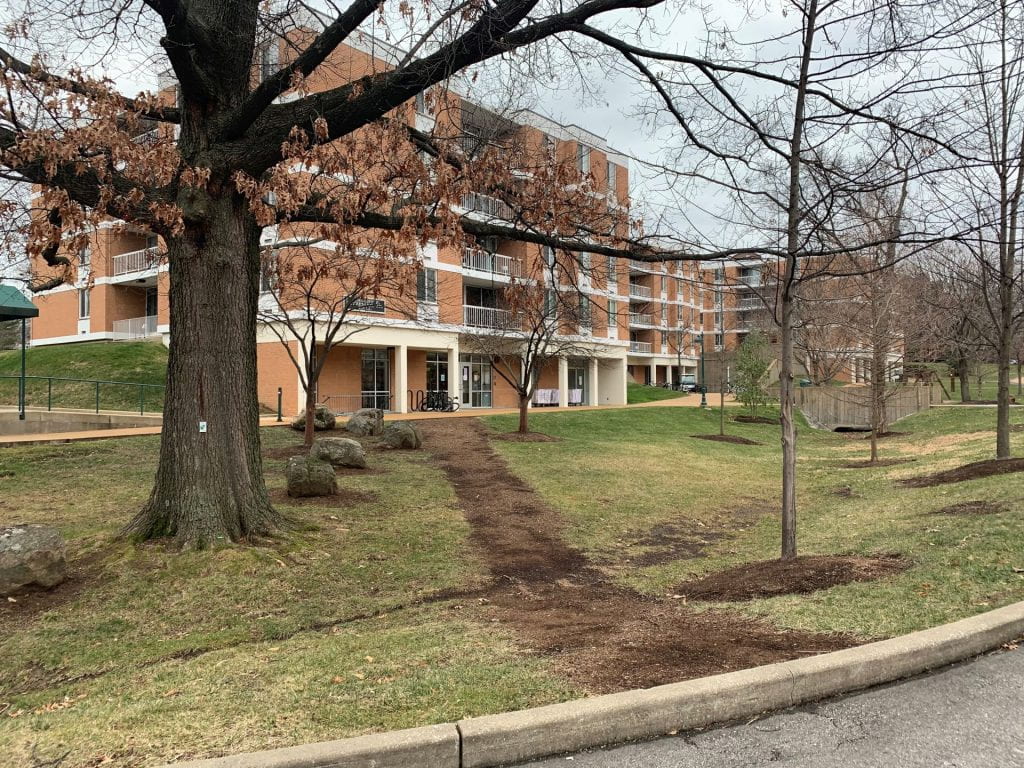
Photo Credit: Cody Azotea 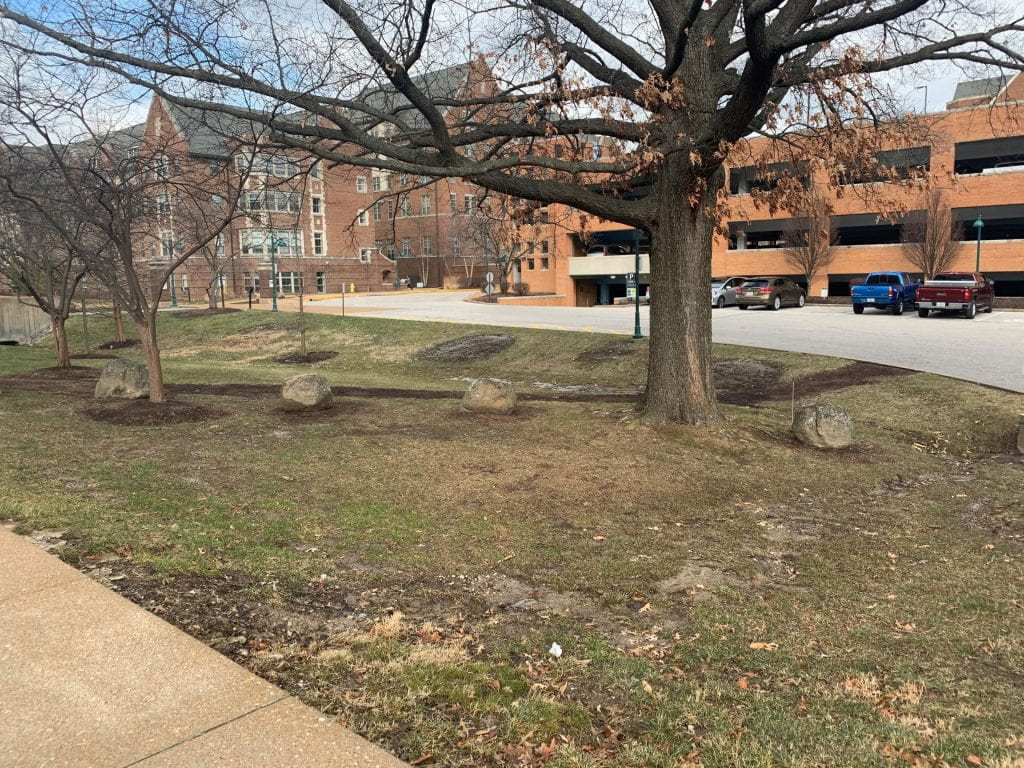
Photo Credit: Cody Azotea
Planning
The proposal included removing all turf to create a stormwater retention feature called a bioswale. Oversized stepping stones would complement the moss covered boulders and provide a reliable walking path for students, while allowing for periodic natural flooding and slowly release pooled water into the soil. Stepping stones were chosen in part because it was the least invasive option, protecting the large oak tree’s roots. The stepping stones were routed past the existing boulders, to invite people to sit and linger. There were three hybrid red maples existing under the large oak. They were starting to compete with the oak, so they were removed to allow the oak to stand alone.
The waterscape design included mostly natives (2,000 plants and 700 bulbs). Plants adapted to moist soils were intentionally selected for the bioswale area while plants suitable for dryer soil were selected for the edges. The color palette was mostly purples and blues with highlights of red and yellow. Varying textures of greens from the different iris and sedges add interest when plants aren’t in bloom. Some species were chosen to expand biodiversity on campus, like the skunk cabbage, marsh marigold, hoary skullcap, black cohosh and red elderberry. The red elderberry was previously proposed by a student to be added to the Trees of WashU Arboretum. This site worked well to introduce this species to campus.
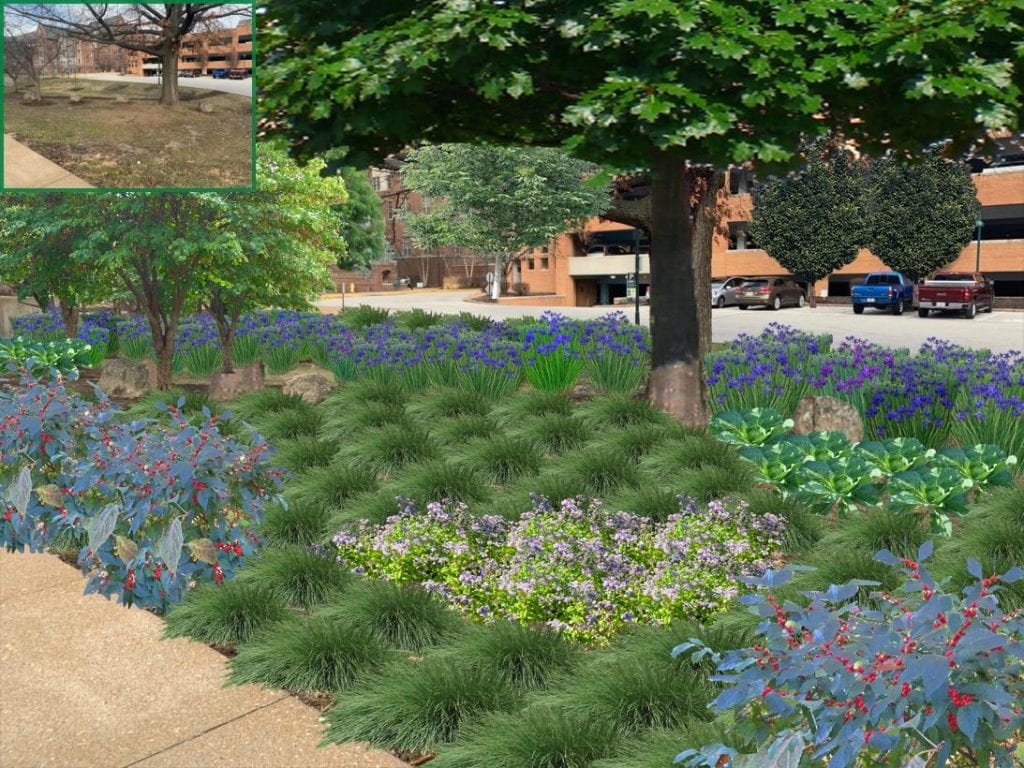
Provided by: Cody Azotea
Installation
The install took several months to complete. Some of the existing turf was Bermuda grass, which took longer to control. Once the grass was fully removed, one inch of compost was top dressed over the entire area to prepare for planting. Bareroot and plugs were utilized for a couple of strategic reasons. While they aren’t as spectacular as the ready-to-go plants you see at a nursery, bareroot and plugs help eliminate waste as they use minimal potting soil and plastic pots. Bonus: they are also less expensive and often are more successful at getting established in their new environment. All the plug trays were returned to grower for reuse.
The bareroot plants went in early April and plugs in mid-May, prior to commencement. After planting, the bed was dusted with a little more compost as a mulch. Compost was used to allow the plants to spread as quickly as possible.
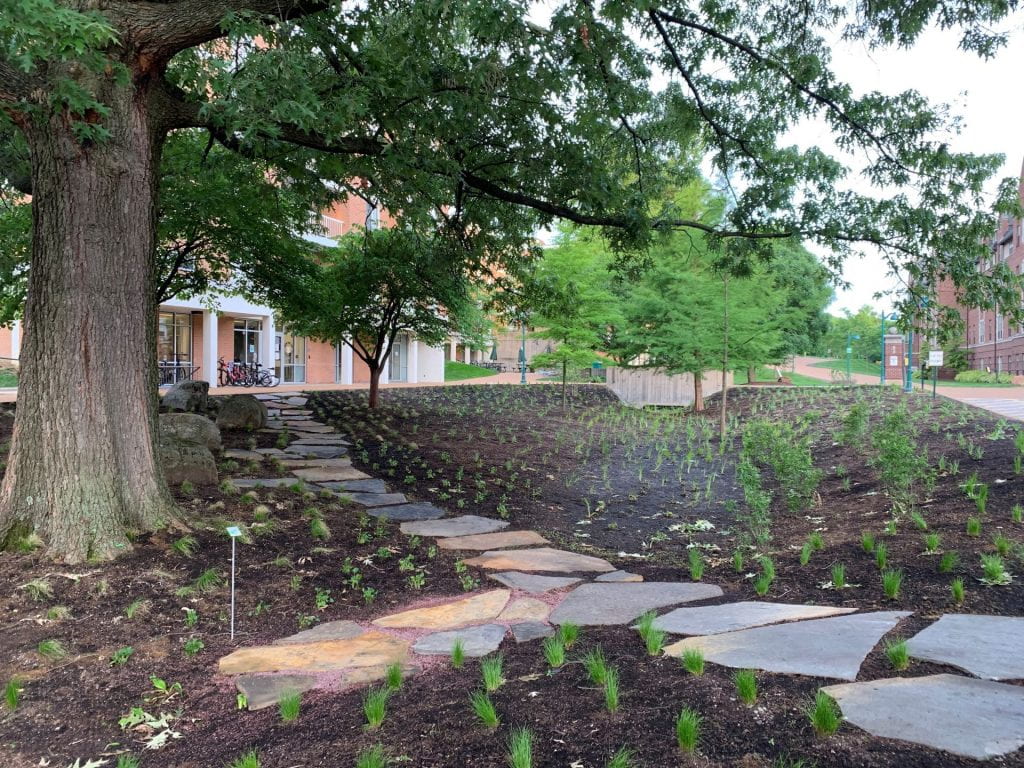
Photo Credit: Cody Azotea
Maintenance
The maintenance for the first year was watering and weeding. The most troublesome weeds were maple tree seedlings and Asiatic dayflower. In late November, bulbs were added for extra color in spring.
After
In summer 2021, just as plants were filling in, the large Southern Red Oak that is the focal point of the new landscape was struck by lightning. Cody Azotea, designer and caretaker of the space, said sadly, “Time will tell if the lightning strike affects the health of the tree in future years. Hopefully the tree can compartmentalize the wound soon.”
As the landscape greets its first year anniversary, passersby can look forward to an impressive display. Cody admits, “I am most looking forward to seeing the large sweeps of native iris bloom later this spring. There is a mix of Southern Blue Flag Iris (Iris virginica) and Northern Blue Flag Iris (Iris versicolor). I hope they will be in bloom around commencement or just after.” There will also be many shades of greens and texture coming up in the next couple weeks.
After rain events, water pools for about 36 hours. A mallard duck magically finds this temporary pool. Now that there is more plant life, especially native plants, it will be interesting to see what other wildlife finds the space.
Expansion
In spring 2022, the grounds team revisited the Hitzeman bioswale, expanding this beautiful piece of “green” stormwater infrastructure westward to Hurd. Much of the preparation techniques were the same, favoring bareroot plants and bulbs and lots of mulch and compost.
This project extension continues to reduce turf grass in an area with steep slopes, low wet areas, and multiple obstacles that make it very difficult to mow. Other benefits will continue to spread too: fewer chemicals and deeper rooted plant material to slow erosion and capture more water.
As for the Oak tree, we will continue to root for its recovery.
